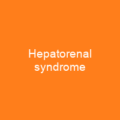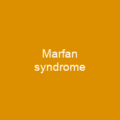Waardenburg syndrome is a group of rare genetic conditions. It is characterised by congenital hearing loss and pigmentation deficiencies. These can include bright blue eyes, a white forelock or patches of light skin. In type 1, there is also a wider gap between the inner corners of the eyes. Most types are autosomal dominant and estimated prevalence is 1 in 42,000.
About Waardenburg syndrome in brief

If two individuals with a mutation in this gene have a child carrying both mutations, for which there is 25% chance, additional symptoms are present in the child, such as a hole in the iris, small eyes, hardened bones and hypomyelination in thebrain. The condition is named after Dutch ophthalmologist and geneticist Petrus Johannes Waardenberg, who described it in 1951. Its subtypes were progressively discovered in the following decades and had genes attributed to them mostly in the 1990s and 2000s. Type 1 is caused. by a mutation in the PAX3 gene, while the gene that most often causes type 2 when mutated isMITF. Type 3 is a more severe presentation of type 1 and is caused in the same way as type 2. Type 4 is most often caused by a mutated gene in SOX10, and some of these have been given their own lettered subtypes, including type 3 and type 4 of type 2 of the condition. Type 5 is a rare condition that causes the person to have Hirschsprung’s disease, which is a congenital lack of nerves in the intestines leading to bowel dysfunction. The person also has a high nasal bridge, a flat nose tip, a unibrow, smaller edges of the nostrils or a smooth philtrum. The difference that defines type 2 from type 1 is that patients do not have the wider gap or dystopia canthorum. Sensorineural hearing loss tends to be more common and more severe in this type.
You want to know more about Waardenburg syndrome?
This page is based on the article Waardenburg syndrome published in Wikipedia (as of Dec. 10, 2020) and was automatically summarized using artificial intelligence.







